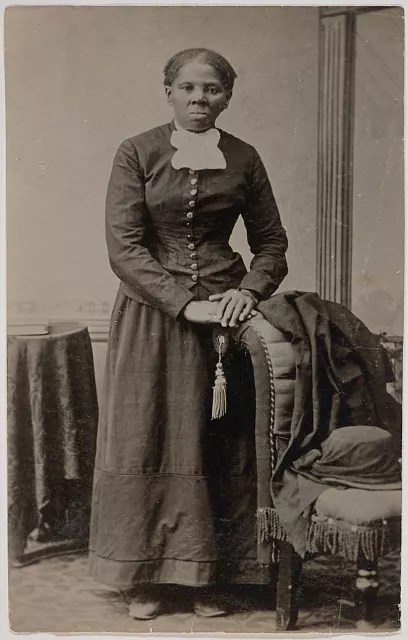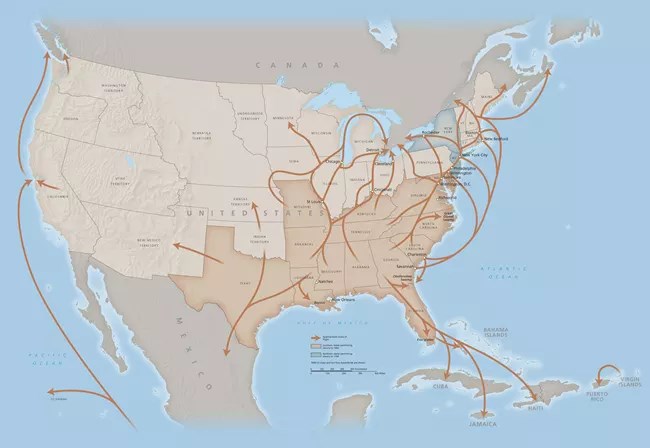
LIBRARY OF CONGRESS
I was the conductor of the Underground Railroad for eight years, and I can say what most conductors can't say — I never ran my train off the track and I never lost a passenger.
-Harriet Tubman, 1896
The Underground Railroad—the resistance to enslavement through escape and flight, through the end of the Civil War—refers to the efforts of enslaved African Americans to gain their freedom by escaping bondage. Wherever slavery existed, there were efforts to escape. At first to maroon communities in remote or rugged terrain on the edge of settled areas and eventually across state and international borders. These acts of self-emancipation labeled slaves as "fugitives," "escapees," or "runaways," but in retrospect "freedom seeker" is a more accurate description. Many freedom seekers began their journey unaided and many completed their self-emancipation without assistance, but each subsequent decade in which slavery was legal in the United States, there was an increase in active efforts to assist escape.
The decision to assist a freedom seeker may have been spontaneous. However, in some places, especially after the Fugitive Slave Act of 1850, the Underground Railroad was deliberate and organized. Despite the illegality of their actions, people of all races, class and genders participated in this widespread form of civil disobedience. Freedom seekers went in many directions – Canada, Mexico, Spanish Florida, Indian territory, the West, Caribbean islands and Europe.

LIBRARY OF CONGRESS/H.L. STEPHENS

NPS
The Underground Railroad started at the place of enslavement. The routes followed natural and man-made modes of transportation - rivers, canals, bays, the Atlantic Coast, ferries and river crossings, road and trails. Locations close to ports, free territories and international boundaries prompted many escapes. As research continues, new routes are discovered and will be represented on the map.
Using ingenuity, freedom seekers drew on courage and intelligence to concoct disguises, forgeries and other strategies. Slave catchers and enslavers watched for runaways on the expected routes of escape and used the stimulus of advertised rewards to encourage public complicity in apprehension. Help came from diverse groups: enslaved and free blacks, American Indians, and people of different religious and ethnic groups.
Maritime industry was an important source for spreading information, in addition to offering employment and transportation. The Pacific West Coast and possibly Alaska became destinations because of ties to the whaling industry. Military service was an additional option; thousands of African Americans joined from the Colonial Era to the Civil War to gain their freedom. During the Civil War, many freedom seekers sought protection and liberty by escaping to the lines of the Union army.

LIBRARY OF CONGRESS/ CAROL M. HIGHSMITH
Last updated: April 7, 2025
